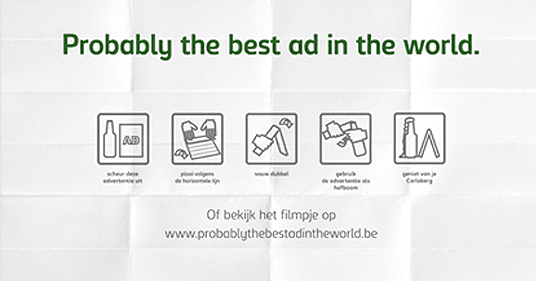HRTech
Rhinos and Enterprise Product Management. The Really Hot Interesting New Opportunity. Advice for Product Managers.
A chat with James Governor about HIPPOs caused me to search fruitlessly for a post that I knew I had written, and then find it lurking in my draft folder.
Several tech companies, for instance, IBM, Dimension Data (now NTT) and SAP partner Epi-use are all using technology to help protect the rhino. This work is admirable, and marketing these efforts is virtue signalling in a most positive way. Involving partners and customers in these efforts creates strong bonds, while doing something good.
This post though, is not about that sort of rhino.

Dürer’s rhino see wikipedia for more
The folks over at the product focus blog wrote about the RHINO. Really Hot Interesting New Opportunity. This RHINO is when a sales person demands you build a feature to help them close a deal. Unlike real rhinos, this sort of RHINO is not threatened by extinction. If you are not careful, it can become a crash of RHINOS, and they will destroy your roadmap and credibility.
As a Enterprise software PM, at some point in your career, you will find yourself in the situation where a powerful sales leader or regional executive will demand that you build something for their critical, most important prospect. They may insist that this is vital to close the deal, and they may even insinuate or outright say that if you don’t build it, it would be your fault if the deal were go to a competitor.
This is my approach to this situation. It doesn’t always work. Sometimes you will get run over by the RHINO. This is painful.
- Establish if it really is the most important deal of the year. For that sales person or region, of course it is, but is it really the most important deal for the business as a whole? Unless you are head of product yourself, make this the head of product’s problem. They should provide you aircover. The simplest way to find this out is to insist the person running the account to set up an internal call with the head of global sales to discuss it. Be open minded, but remind them early on about the future commitment and revenue recognition. The sales person usually backs off at this point. If they can’t get the call with the head of sales, then you have called their bluff. Even so, it may still be good to talk to the prospect directly.
- Understand what the requirement actually is. Most of the time it is actually in the product already, or it is is on the roadmap. Establish why this is feature is so critical to the prospect by talking to the prospect. Really listen to them directly with an open mind. Don’t rely on the salesperson’s explanation of the requirement, ever. Once you actually discuss it with the expert at the prospect, you both may find it is less important than the sales person lead you to believe. You may also learn something about your competitors that you didn’t know. The prospect may also have an awesome idea, so don’t shut it down too quickly.
- Spend time explaining the requirements prioritization process to the prospect -how you take existing customer feedback into account in the roadmap, how your advisory councils work etc. Explain that your roadmap is a pact with your current customers. Shifting roadmap to win deals undermines the relationship with existing customers. Offer to connect them with advisory council members. Ask them how would they feel if their requirement got shifted for the next great deal? Most of the time, the prospect will respect this openness, and the requirement stops being a deal breaker.
- If you are thinking of shifting the roadmap, make sure you define clearly what the success criteria are for this development. You need to apply tight discipline here. I really like the hypothesis based product management process that Barry O’Reilly discusses here. More of that in another post.
- Get in touch with revenue recognition legal team early, especially if you feel that you will be out gunned. Spec out the scope of the requirement with engineering involvement, and remind the sales people of the impact that this will have on their commission and the broader revenue. Don’t assume the sales folks will take care of revenue rec. Don’t allow vague promises to be made by sales. Insist that it goes in the contract. This sounds counter intuitive, but by forcing a hard commit rather than a vague soft commit, you hold sales accountable for the cost of the promise. And there is no misunderstanding later on.
- Keep reminding yourself and your management that you should only build things that are good for the overall product. If you think that what the prospect wants is not good for the overall product, you need to say so. As a PM this is what you are paid to do. You decide the product roadmap, not the sales person. Your engineering colleagues depend on you to safeguard roadmap for technical enhancements, platform work etc. Be firm, but polite. Every time you fold to a sales demand, you undermine your relationship with engineering and perhaps the long term product health.
- Document, document, document. Use the incident to drive longer term resourcing demand, but remember, additional headcount only benefits roadmap 9-12 months out, so even if you can get cavalry, they aren’t coming anytime soon.
- If the deal turns out to be the deal of the year, and you are forced from the top to compromise, make sure that you document the requirement precisely, and that you define the roadmap impact quickly, and establish which other customers this will impact. Get your communications plan in order. Make sure the executive that insisted that you make the change has your back if you have to break other commitments to do this. Don’t be tempted to always raid the technical debt or innovation roadmap to fund RHINOs.
- Make sure as a team you track all the RHINOS. Once a quarter PM leaders should meet sales leaders and review the RHINOS cases. Know the exact cost of the RHINOs. A occasional RHINO is an occupational hazard, but if they are too common, then you need to rapidly reset the sales to development relationship.
- When you ship the RHINO, make sure you measure if it actually gets used or not. If after shipping, if even the RHINO customer doesn’t actually use it, it will help you deflect the next charge from the next one.
I have a whole zoo of animal metaphors, including Kangaroos). Maybe this should be a product conference presentation…..



